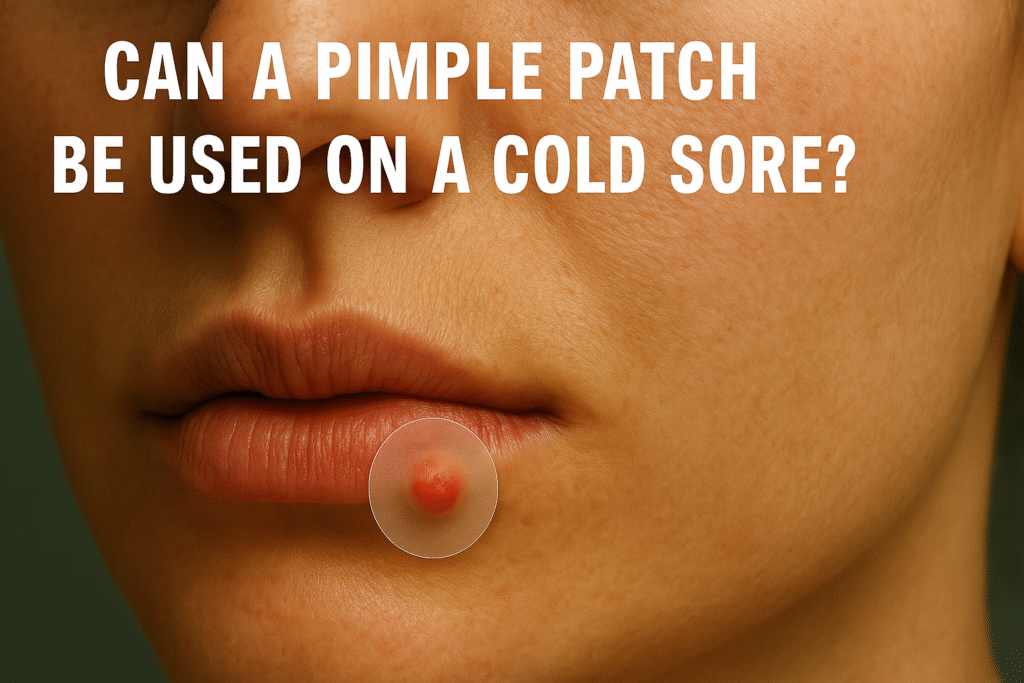
Can You Use a Pimple Patch on a Cold Sore?
- Pimple patches are meant for acne, not viral cold sores.
- While you can place one on a cold sore, it won’t treat the virus.
- If you want faster healing and symptom control, use doctor-recommended antiviral remedies.
Understanding Cold Sores vs. Acne
Cold sores (fever blisters) are painful, fluid-filled blisters—usually around the mouth or lips—caused by the herpes simplex virus (HSV-1). They are quite contagious, often painful or tingly, and require specific antiviral treatment for effective healing.
Pimples, by contrast, are blockages of hair follicles or pores due to oil build-up, bacteria, and dead skin. They are not contagious and usually respond to treatments focused on bacteria, inflammation, or excess oil. While both can look similar in early stages, their cause and optimal treatment are entirely different.
Tip: Always be sure if your bump is a cold sore or a pimple. If you’re unsure, consult a pharmacist or dermatologist before applying any product.
Pimple Patches: How Do They Work?
- Main Material: Hydrocolloid dressing—absorbs fluid, creates a moist healing environment for pimples.
- Extras: Some contain medicated actives (salicylic acid, tea tree, cica, or niacinamide).
- Function: Keeps dirt and hands off pimples, may flatten zits by drawing fluid to the surface.
Many people love how pimple patches make acne less visible and reduce the urge to pick, helping acne heal more quickly and less visibly.
So, Can You Use a Pimple Patch on a Cold Sore?
Technically, yes—you can apply a pimple patch to a cold sore. It may keep you from touching the blister and offer a small shield against outside bacteria or dirt.
However:
- Pimple patches do not contain antivirals and cannot fight herpes simplex virus.
- Some added ingredients (like tea tree or salicylic acid) may sting or irritate the sore, causing pain or delayed healing for sensitive skin.
- You may still be contagious, as pimple patches do not prevent viral shedding or contact spread.
“Hydrocolloid patches are generally safe to place on skin, but when it comes to cold sores, they’re not a substitute for proper antiviral treatments. They might help you feel less embarrassed in public but offer no virus-fighting benefits” — Dermatologist insight
What Happens If You Do?
- Barrier effect: If you have social anxiety about visible cold sores, a patch can camouflage the lesion and remind you not to touch, poke, or pick. This may help prevent secondary infection.
- No faster healing: Unlike approved cold sore creams (such as docosanol or prescription antivirals), patches do not speed up or shorten outbreaks.
- Possible discomfort: Some users report stinging, redness, or increased irritation (especially if using medicated, scented, or “microneedle” pimple patches).
- Recommendation: If you try a patch, use a plain unscented hydrocolloid. Discontinue if it causes burning, swelling, or additional redness.
| Remedy | How It Works | Best for |
|---|---|---|
| Pimple Patch | Covers sore, absorbs ooze, hides visually | Reducing picking, mild camouflage |
| Docosanol (Abreva) | Antiviral; blocks the spread of HSV-1 | Shortening outbreak (if used early) |
| Acyclovir/Valacyclovir prescription | Inhibits viral replication | Severe, frequent, or early outbreaks |
Common Myths & Truths
- Myth: “If it heals a pimple, it’ll heal a cold sore.” False.
- Myth: “All patch ingredients are skin-safe for lips.” Not always. The skin on and around the lips is sensitive!
- Truth: “Patches help disguise and prevent picking, but don’t fight viral infection.”
- Truth: “Proper cold sore medicines are faster and safer for healing.”
Final Thoughts: Should You Try It?
If your only goal is to hide or protect your sore from picking, a plain pimple patch may help. But for true healing and relief, reach for antiviral options first.
When in doubt—especially if it’s your first time getting a cold sore or if you have repeated outbreaks—see a healthcare provider.
Mighty Patch Review 2025: Do These Acne Patches Really Work Overnight?
